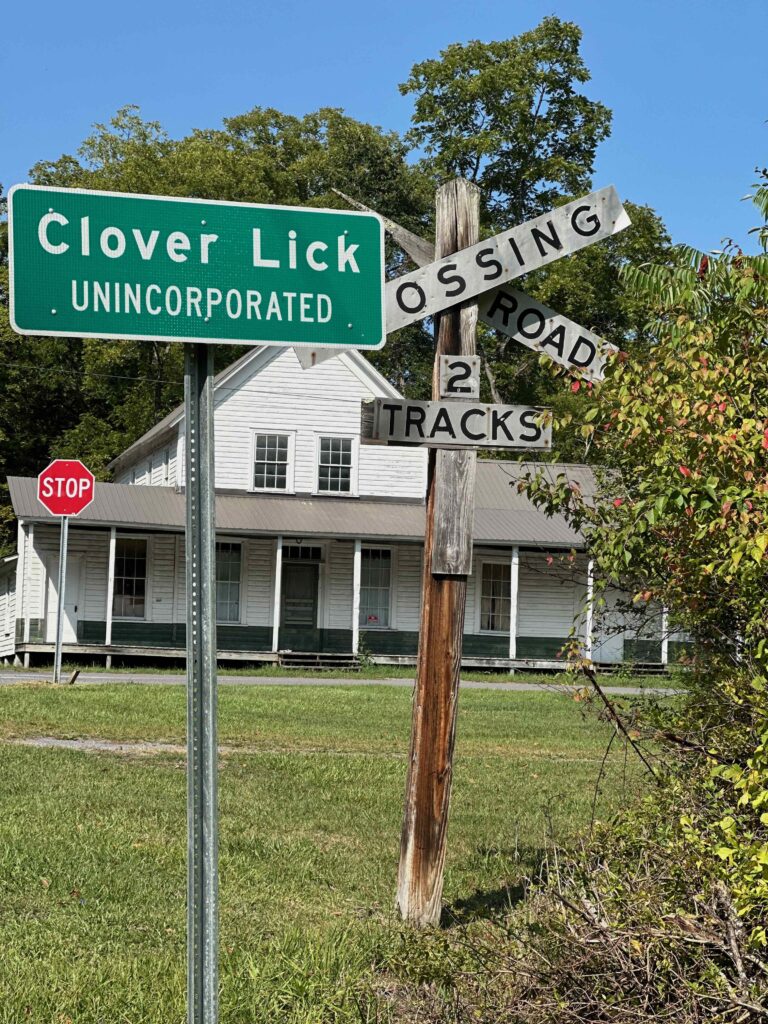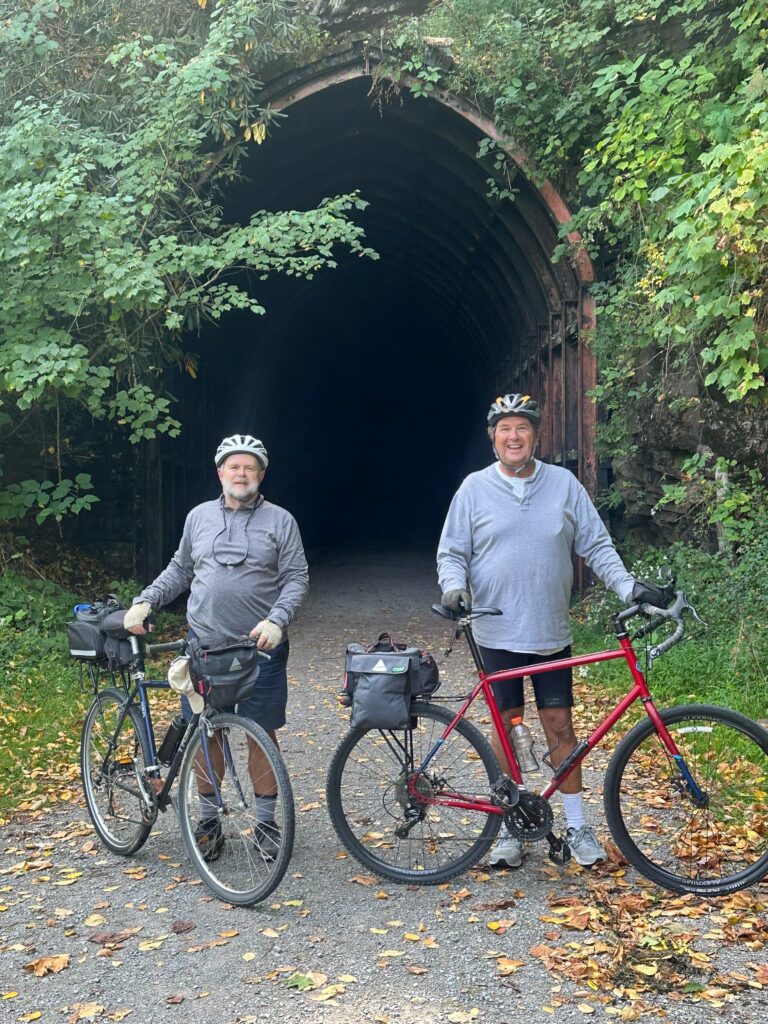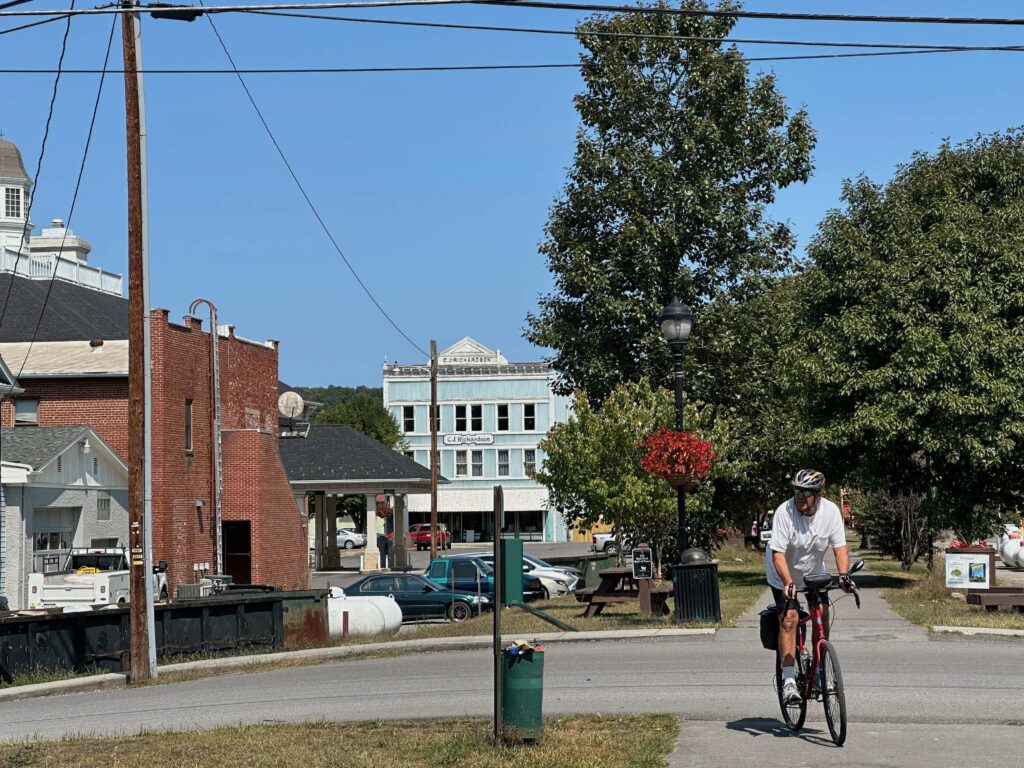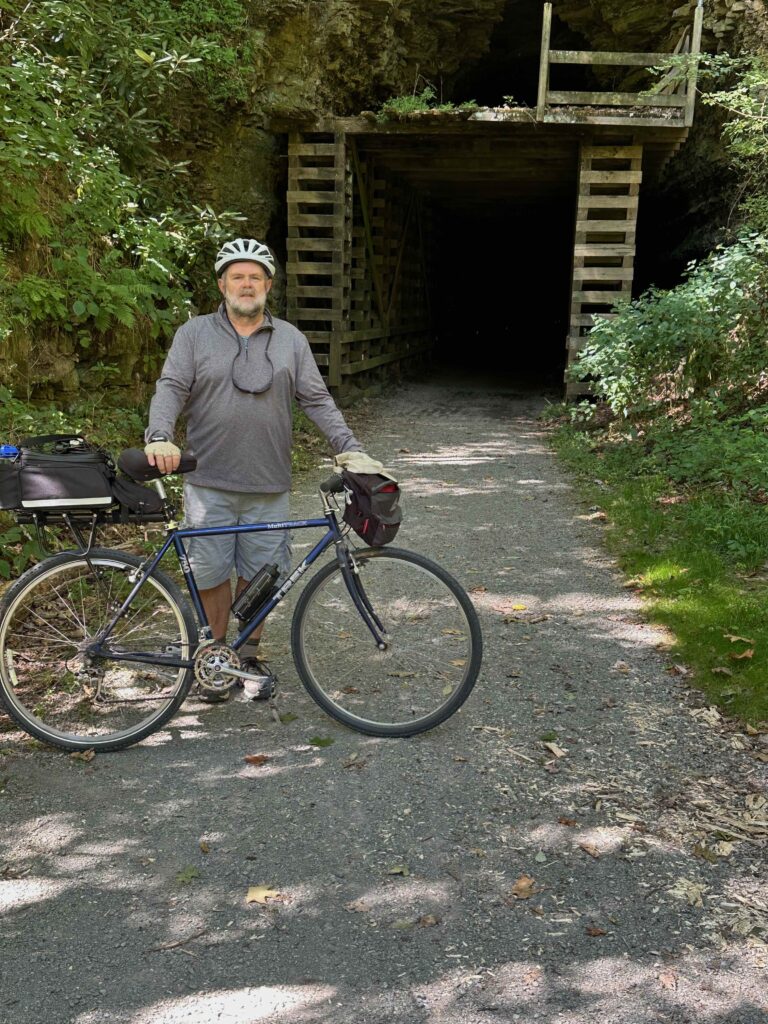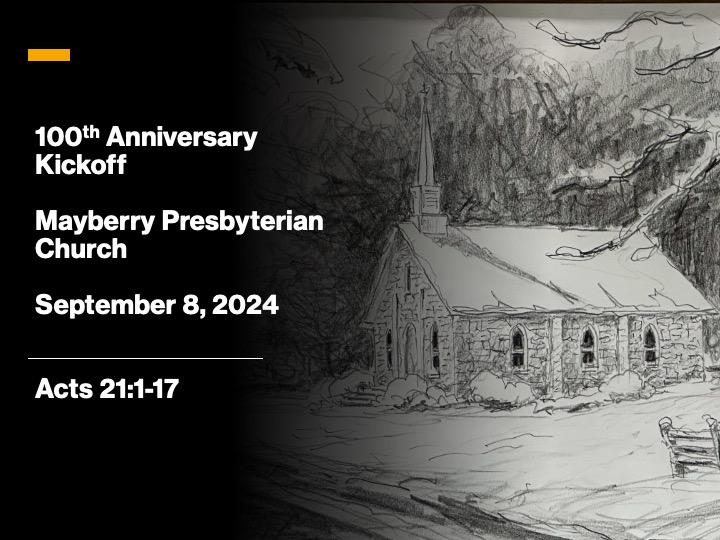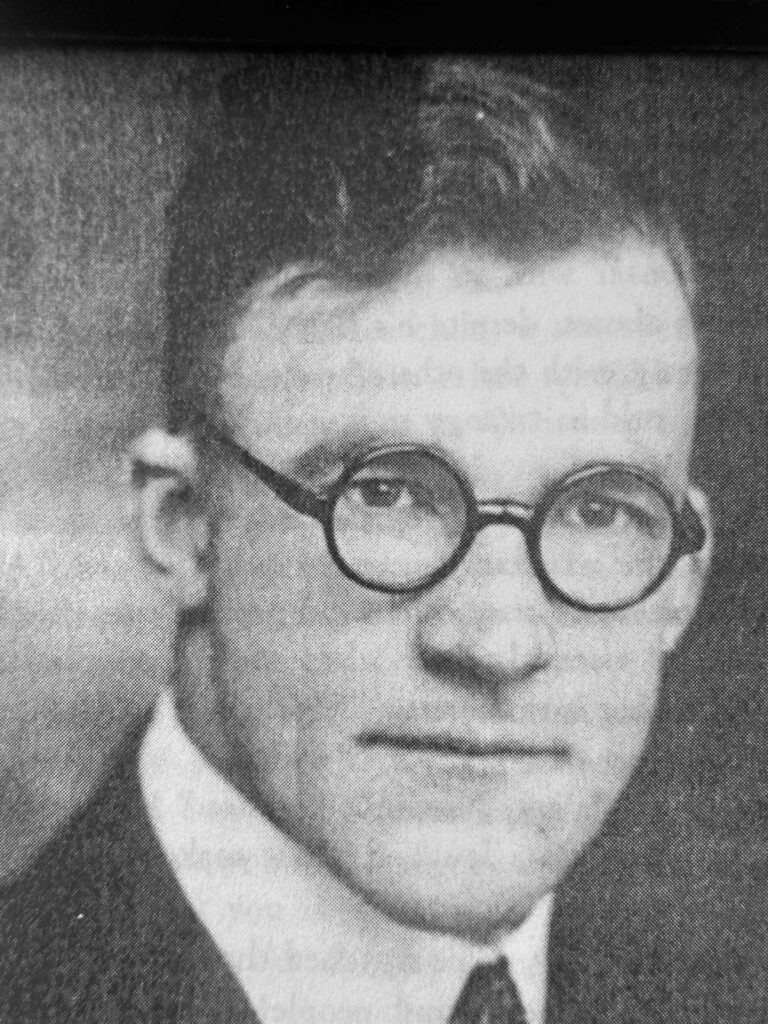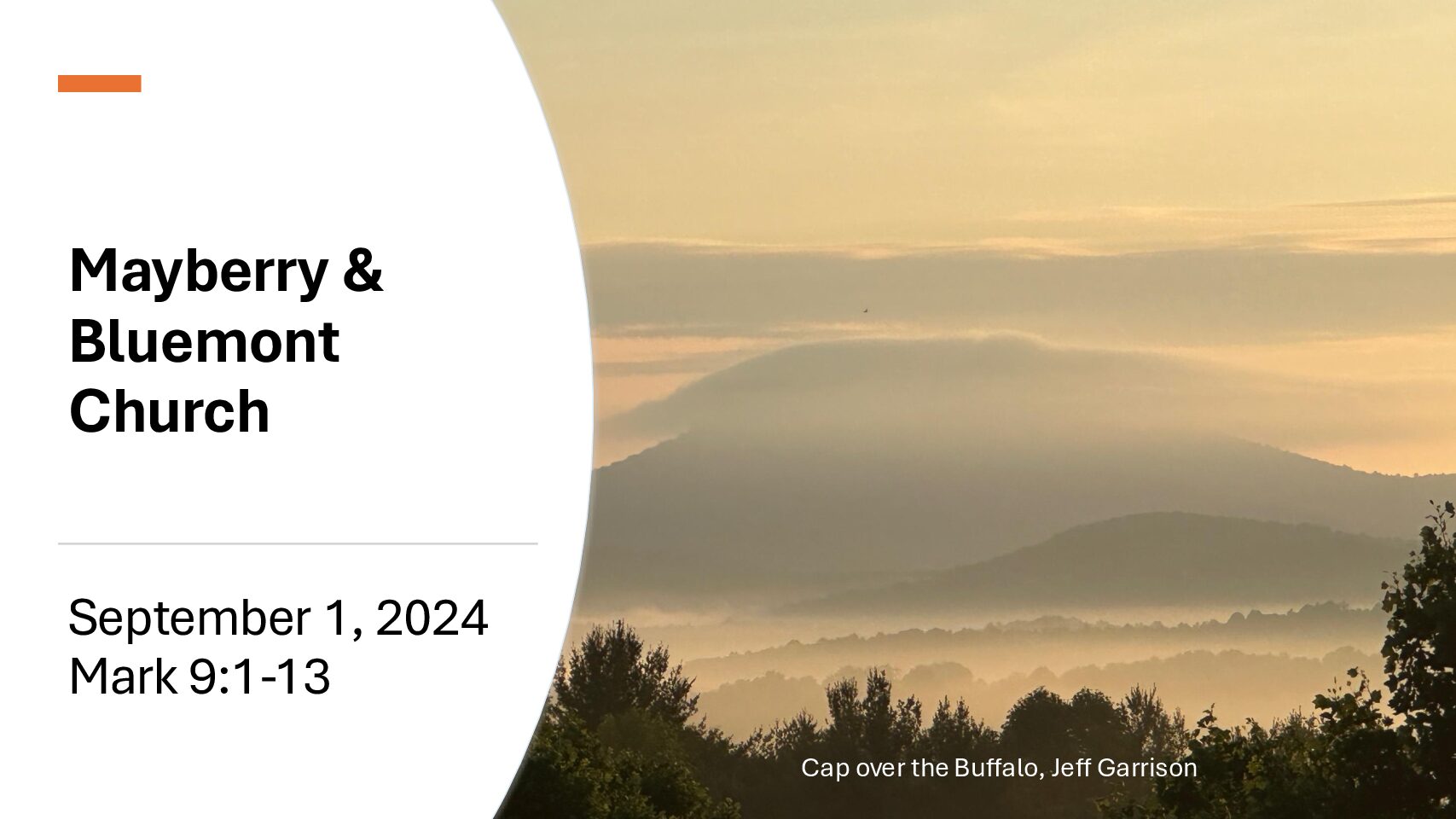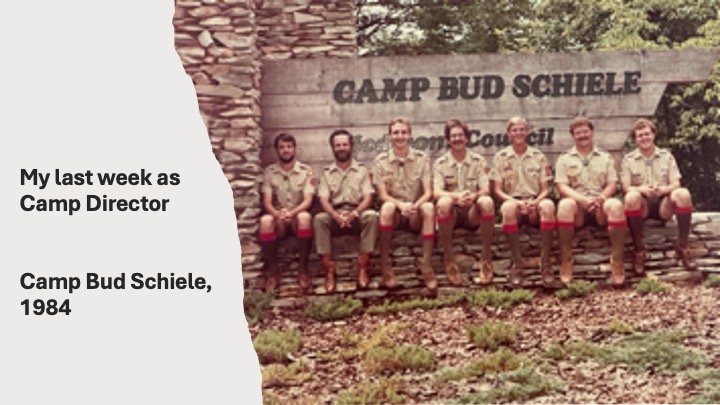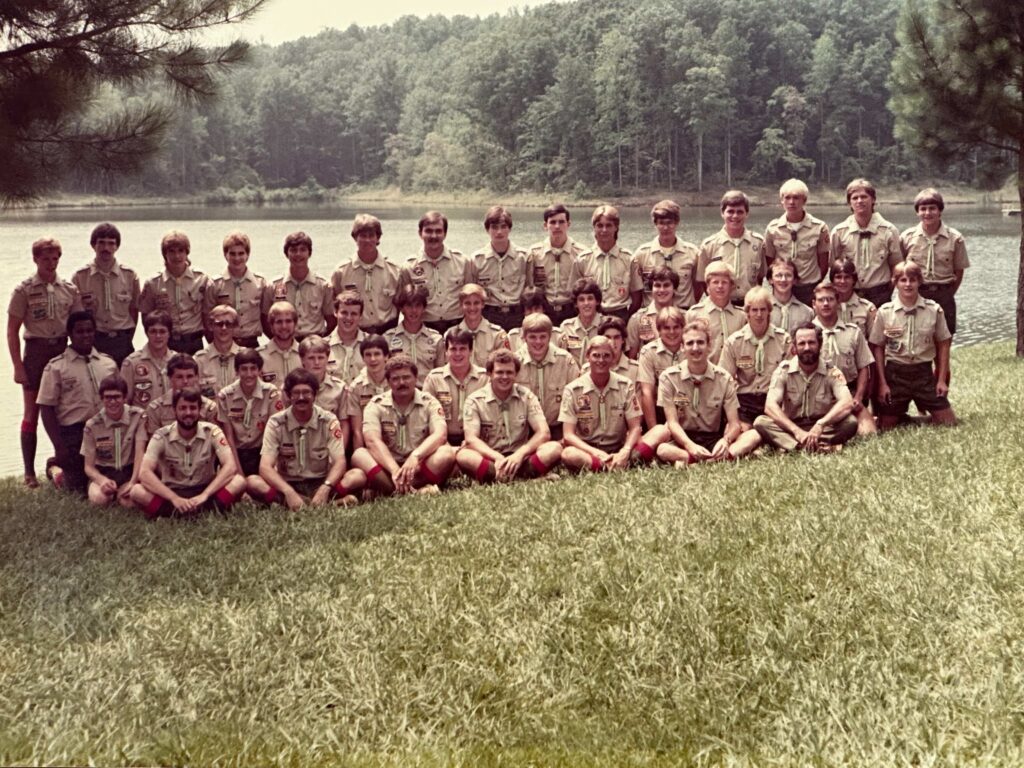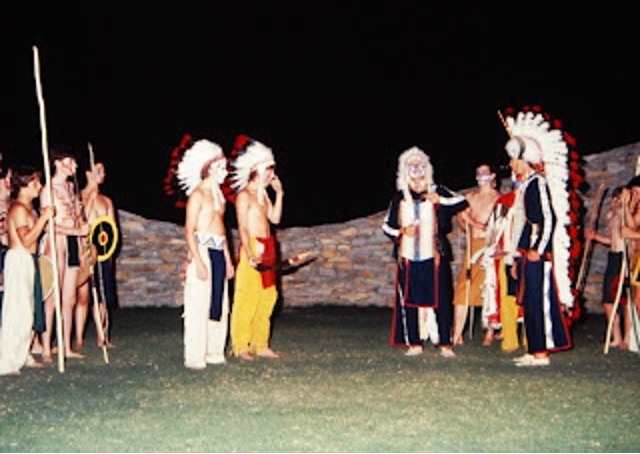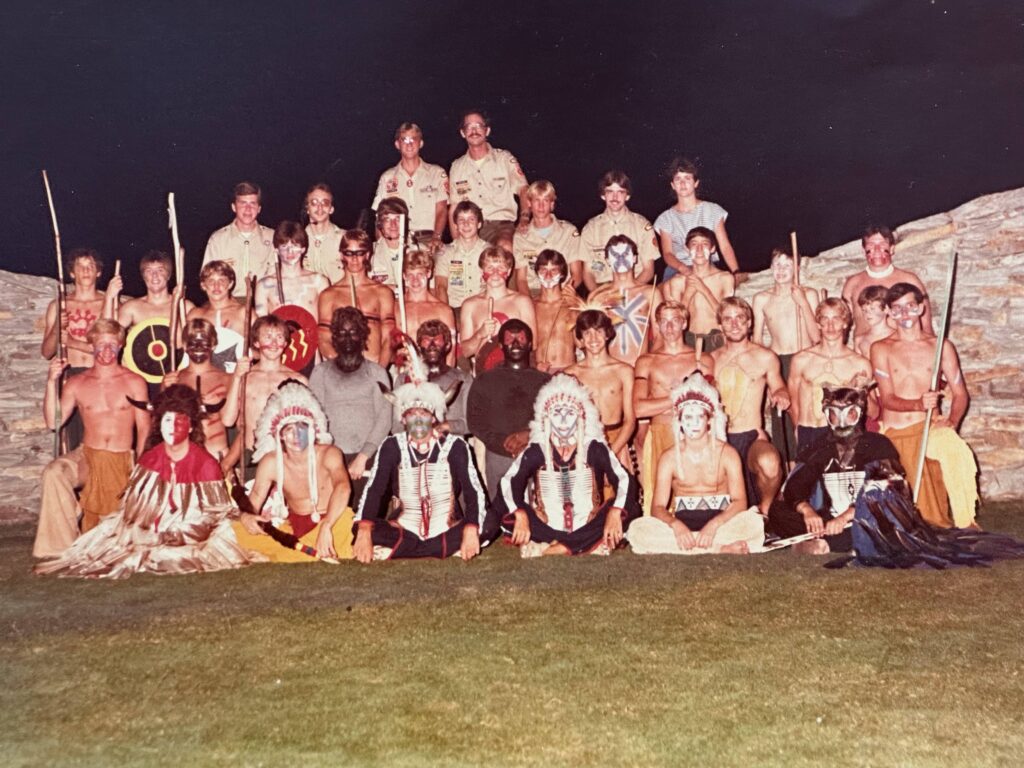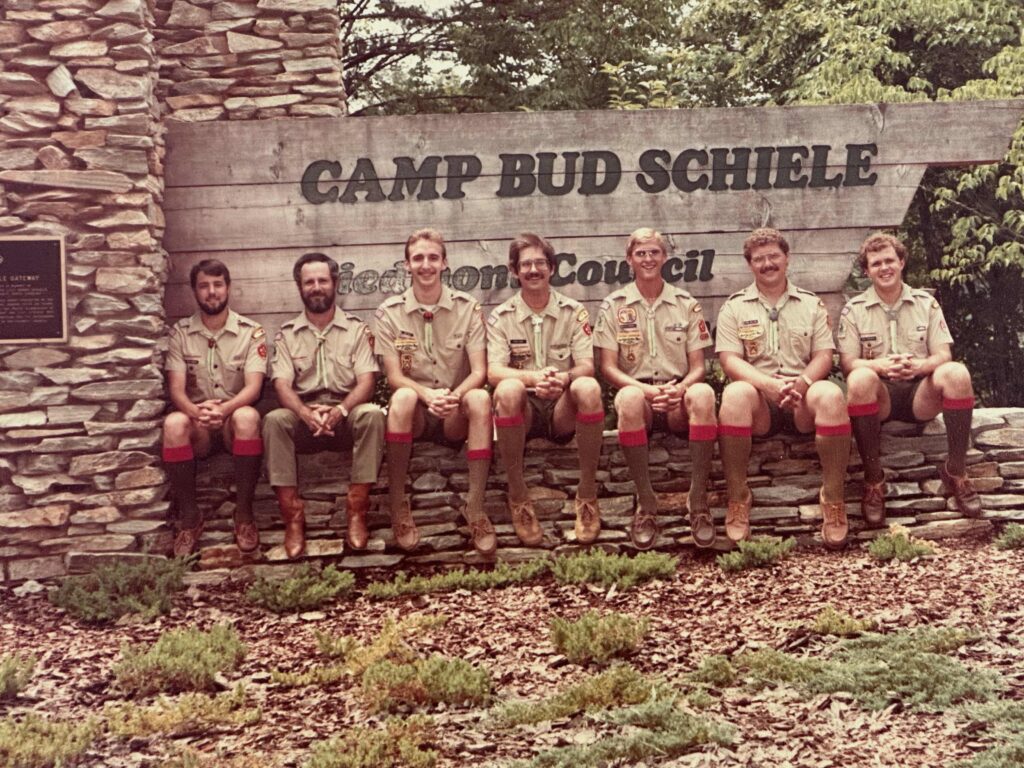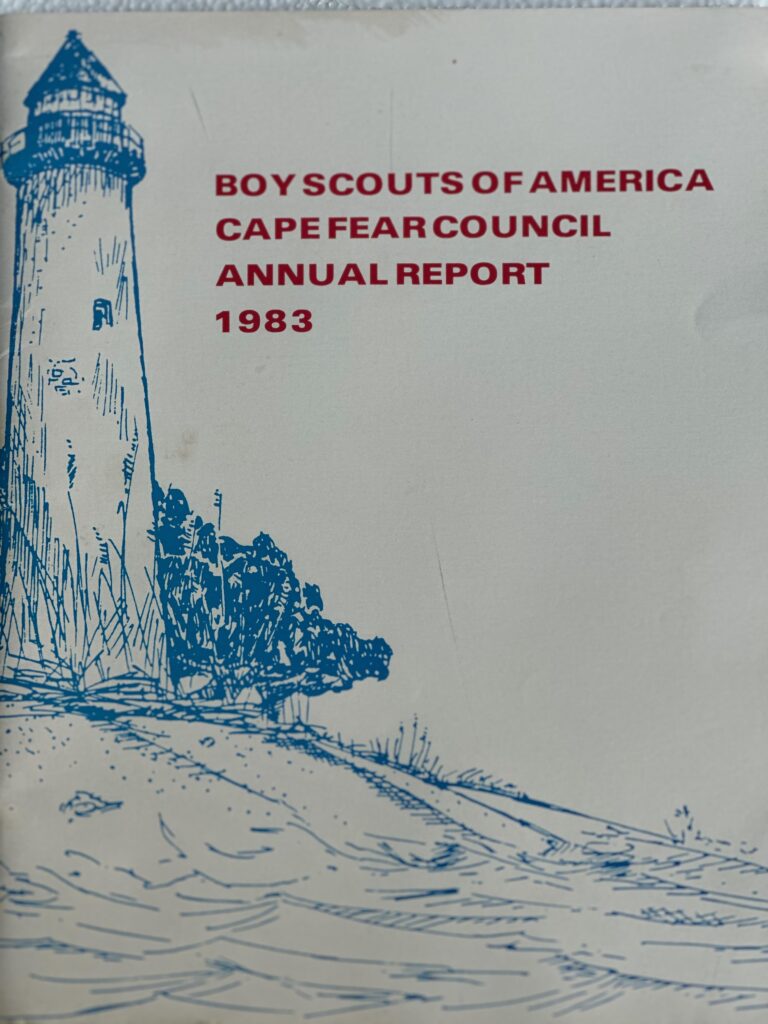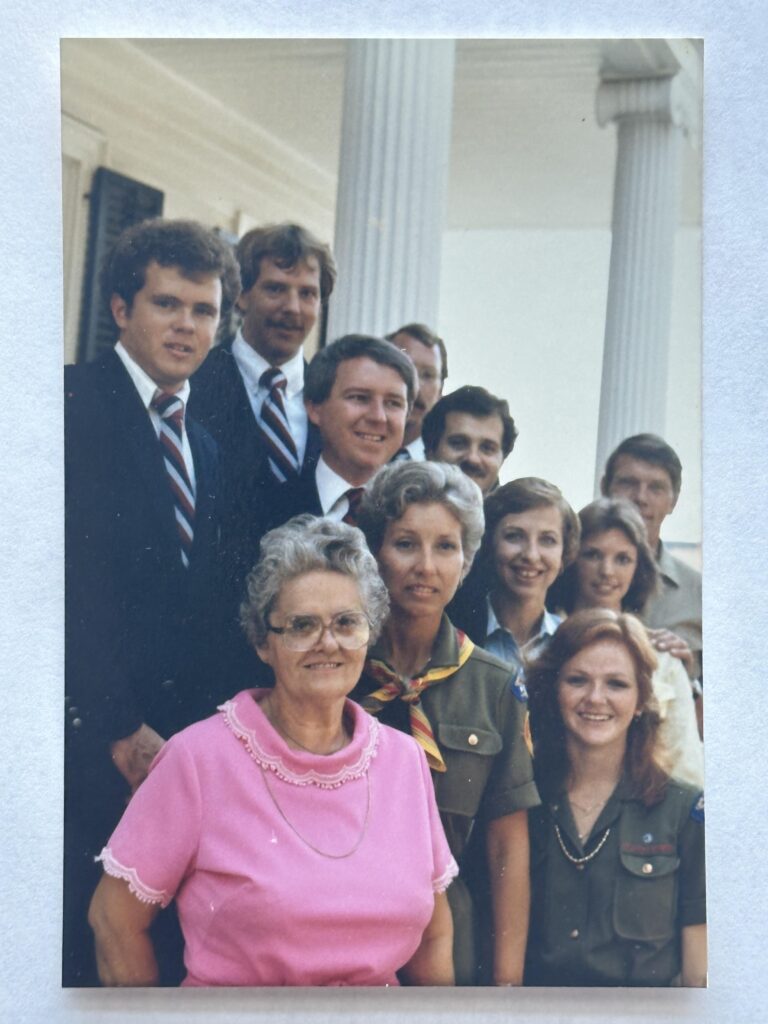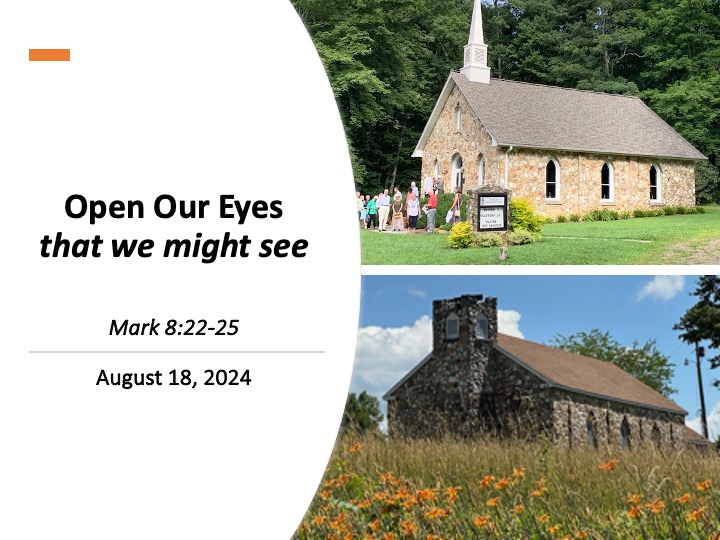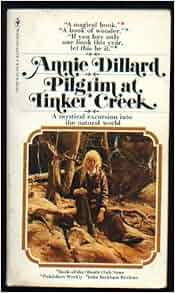Jeff Garrison
Bluemont & Mayberry Churches
September 15, 2024
Mark 9:14-29
Before reading the scripture:
We return to Mark this week. If you remember, from two weeks ago, we left Jesus along with three of the disciples—Peter, James, and John—as they headed down mountain in search for the rest of the disciples.[1]
In our passage today, we learn the remaining nine disciples weren’t slacking while Jesus and his core group were on the mountain. Instead, they did ministry, which involved healings and casting out demons. It also included arguing with the Scribes. Somethings never change. As Jesus arrives, the nine are in a heated argument. This passage contains one of the most touching expressions of human ability and faith, with the man with a possessed boy crying out, “I believe, help my unbelief.”
Shortly afterwards, Jesus performs his last exorcism in Mark.[2]
I wonder what everyone argued about. We’re not really told. Yet, everyone seems glad Jesus has arrived. “Overcome with awe,” we’re told. Perhaps, as Jesus and three of the disciples have just come down from the Mount of Transfiguration, a glow still surrounds his face. Or, more likely, they’re just glad he’s there so he can settle their differences.[3]
Jesus asks, “what’s going on.” He doesn’t get the answer we expect. I don’t know why the nine disciples who’d remained behind didn’t just lay it all out for Jesus. They could set have forth both sides of the argument and let Jesus settle the issue. Maybe they were embarrassed.
Or, perhaps this is one of those all-too frequent occasions where the real issue is something different than what the argument was about. This happens all the time, especially in relationships. You argue about one thing when you are mad about something else.
What’s at issue here is a possessed boy driven into fits and driving his parents insane. The boy needs help. We’re told the disciples, the nine who were not with Jesus, tried to free the boy from the demon. They failed. Some scribes were also at this gathering and, we might assume, likewise, were unable to help the boy.
I have an idea what this argument was all about. Since neither the disciples nor the scribes can heal the boy, they distract the crowd by debating theology. It keeps both sides from looking bad. They argued over the nature of God, which is an important topic I think we’ll all agree. But while they argue, this kid rolls on the ground foaming at the mouth. Compassion must trump even correct theology.
We’ve all been created in God’s image and given a dose of compassion. However, it seems as if those gathered around this boy have lost theirs. I have a hunch why they suddenly get quiet when Jesus asks what’s up. They know Jesus will see through the fog and get to the real issue—a child in need.
While the disciples, scribes and the crowd remain silent, a man in the back speaks up. “I brought my son to your disciples. They couldn’t rid his body of the demon.” The silence of the crowd and the plea of the father focus us on the real issue. Jesus is incensed. “How much longer,” he shouts, “do I have to put up with you?” Jesus directs his anger at the disciples, in other words at the ones who should know better. And you know what, we’re a lot like the disciples. If we can’t fix something, we create a distraction and/or blame someone else.
Jesus then asks them to bring the boy to him. When the demon inside his body sees Jesus, it goes berserk. Even demons believe and tremble, we’re told.[4] The demon throws the child into a violent fit. The healing stories of Jesus are always more than just a demonstration of brute power overcoming illness and evil. If Jesus only wanted to demonstrate his power, he would have just said, “Get gone, you bad demon,” and the freed boy would run home to his momma. Instead, Jesus uses this opportunity to teach.
This passage also reminds us that sometimes, the worst seems to come just before the healing. Kind of like the coldest part of the night falls just before dawn. Here, the demon throws the boy into an even more violent episode knowing it will soon to be expelled.
As the boy shakes uncontrollably, Jesus asks the father about how long the boy has been like this. The desperate father tells Jesus the boy has been like this since childhood. A demon has tried continually to destroy the boy by throwing him into the fire and into bodies of water. Evil always brings destruction and death.
Mark is the short gospel; often brief on the details. Interestingly, here, Mark provides more details than the other two gospels which also have this story. Mark recalls the conversation between Jesus and the boy’s father.[5] We get a sense of the father’s desperation. “If you are able, do something,” the father pleads.
This request takes Jesus back. “If I am able?” he asks. “If I am able? Sure, I’m able; all things are possible with faith.” I wonder if the man’s faith had been challenged by the disciples’ inability to help his son. After all, he had obviously heard about Jesus and the twelve and felt if he could just get his son to them, he’d be made well. But then, it didn’t happen.
The man assumed the disciples had the powers of their master and is now down to his last straw. “Maybe Jesus can help,” he thinks, “but maybe not. I better not set my hopes too high.”
When Jesus tells him that all things are possible for one who believes, he cries out, “I believe, help my unbelief.” This is the climax of the passage. “I believe, help my unbelief.” It’s a cry of desperation. He believes because he has no other option.
He believes, but he stills harbors doubts. If we are honest, most of us identify with the man’s feelings. We know Jesus is the answer, but we don’t want to trust him enough to throw on him all our concerns.
“Consider the lilies of the field and birds of the air,”[6] Jesus tells us. We’re quick to remind Jesus that we are not flowers or birds, but people, human beings, Homo sapiens, the crown of creation. We are people with jobs and homes and mortgages and car payments and kids with whom we have a hard time relating. Like I said, we’re like this man. We believe, but only to a certain point. We believe, but not fully. Where we get in trouble is our desire to keep some control for ourselves.
“I believe; help my unbelief.” This is an honest statement of our human condition. The ability to say “I believe” comes the grace God gives us to seek him out. The cry, “help my unbelief,” is a prayer of confession that demonstrates to God our dependence upon him. To say, “I believe,” isn’t enough. We can all say, “I believe,” and still believe it is something we do by ourselves. We can say “I believe,” and believe were in control. But when we say, “Help my unbelief,” we admit our need and dependence upon God.
“Prayer is faith turned to God,” one theologian says.[7] The boy’s father turns to the only one who can help. This story is not about the boy’s father getting his theology right or anything like that. It’s about him completely trusting the Lord of the Universe, the one also provides us with the faith we need for such trust.[8]
It’s difficult to admit; but we can’t do it alone. Here, as we’ve seen before in Mark, when Jesus gets the disciples alone inside a house, he clarifies things.[9] This type of demon can only be driven out by prayer, Jesus says.
Oddly, Mark doesn’t spend as much time discussing prayer as the other gospels. But he wants his readers to know that strength lies in them trusting God, as seen through Jesus.[10] Overcoming the powers of evil is not something we do by ourselves. That’s why Jesus came, as we’ve seen earlier in Mark, to bind the “strong man.”[11] Only by depending upon God can we be truly successful, for only God can help us overcome to power of evil.
This passage reminds us that we’re not God. We don’t run the company, and we’re not the CEO. Jesus is in control and we’re here to do his work. We depend on him and his power as we listen to the cries of those in pain. We listen and reach out with compassion and love, doing what we can to help and praying for help when needed. Amen.
[1] https://fromarockyhillside.com/2024/09/01/the-transfiguration/
[2] Douglas R. A. Hare, Westminster Bible Companion: Mark (Louisville: W/JKP, 1996), 109.
[3]Interestingly, the crowd is in awe before Jesus heals! See Morna D. Hooker, The Gospel According to Saint Mark (London: A & C Black, 1991, Hendrickson Publishing, 1997), 222-223. More likely they were in awe of Jesus’ past healings as the glow would have quickly faded and if not, why would Jesus want to keep the transfiguration a secret? See Mark 9:9 and James R. Edwards, The Gospel According to Mark (Grand Rapids: Eerdmans, 2002), 276.
[4] James 2:19
[5] Matthew 17:14-21 and Luke 9:37-43.
[6] Matthew 6:25-28.
[7] W. Grundmann, as quoted in Edwards, 281.
[8] See the sermon on this passage by Fleming Rutledge in Help My Unbelief: 20th Anniversary Edition (Grand Rapids, MI: Eerdmans, 2000), 9.
[9] Mark 4:1-2, 10; 7:14, 28; 10:1, 10. See Edwards 281.
[10] Mark only speaks of prayer in three other places. Mark 1:35, 6:46, and 14:32-39. See Edwards, 281.
[11] Mark 3:27. See https://fromarockyhillside.com/2024/04/07/the-unpardonable-sin-baseball-doing-the-will-of-god/



